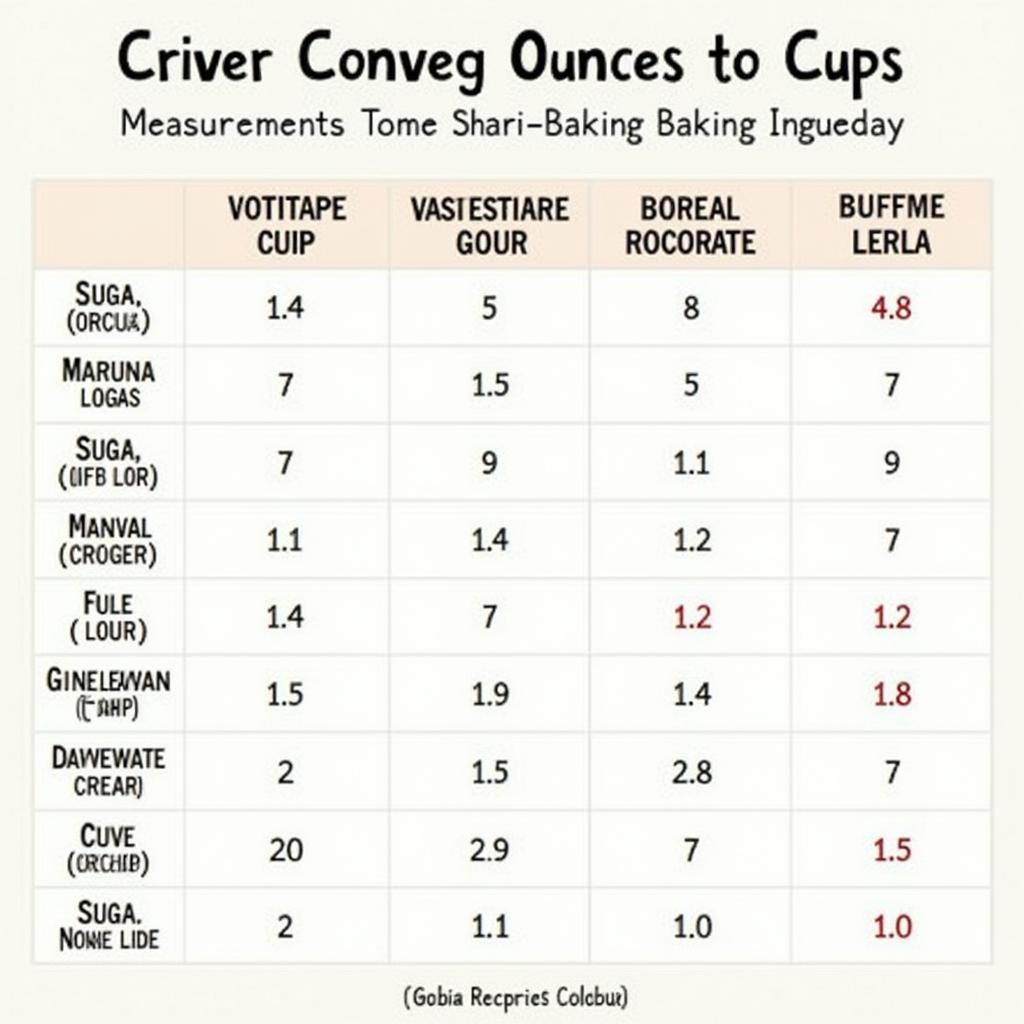Converting ounces of flour to cups is a common task for bakers of all levels. Whether you’re following a recipe from a cookbook or a website, chances are you’ll encounter measurements in ounces. Luckily, converting between ounces and cups is simple with a little bit of knowledge. In this comprehensive guide, we’ll explore the various factors that influence this conversion, provide you with practical tips and tricks, and equip you with the confidence to bake effortlessly.
Understanding the Conversion Process: Why It Matters
Before diving into the specifics, let’s understand why converting ounces to cups is crucial in baking. Flour is a key ingredient in most baked goods, and its precise measurement is essential for achieving the desired texture and consistency. Using the wrong amount of flour can lead to dense, dry, or crumbly results.
Factors Influencing the Conversion
The conversion of ounces to cups is not always straightforward, as several factors can affect the accuracy of the conversion. Here are the primary considerations:
- Type of Flour: Different types of flour, such as all-purpose flour, cake flour, and bread flour, have varying densities. This means the same weight (in ounces) can occupy different volumes (in cups).
- Measuring Technique: The method you use to measure flour can influence the result. Scooping flour directly from the bag can trap air, leading to inaccurate measurements. The best practice is to spoon the flour into your measuring cup and level it off with a straight-edged tool.
- Flour Storage: Flour absorbs moisture over time, particularly when stored in a humid environment. This can affect its density and the accuracy of the conversion.
The Most Accurate Way to Convert Ounces of Flour to Cups
While online calculators and conversion charts can be helpful, the most accurate way to convert ounces to cups is to use a kitchen scale.
Using a Kitchen Scale for Precision
Here’s how to use a kitchen scale for accurate conversions:
- Zero Out the Scale: Place an empty bowl or container on the kitchen scale and press the “tare” or “zero” button to zero out the weight.
- Weigh the Flour: Carefully pour the desired amount of flour into the bowl. The scale will display the exact weight in ounces.
- Convert to Cups: Use a conversion chart or online calculator to convert the weight in ounces to the equivalent volume in cups.
Common Conversion Chart for All-Purpose Flour
For those who don’t have a kitchen scale, here’s a common conversion chart for all-purpose flour:
| Ounces | Cups |
|---|---|
| 1 ounce | 0.125 cup |
| 2 ounces | 0.25 cup |
| 3 ounces | 0.375 cup |
| 4 ounces | 0.5 cup |
| 5 ounces | 0.625 cup |
| 6 ounces | 0.75 cup |
| 7 ounces | 0.875 cup |
| 8 ounces | 1 cup |
Important Note: This chart is a general guideline and may vary slightly depending on the factors mentioned above.
Tips for Converting Ounces to Cups without a Scale
If you don’t have a kitchen scale, here are some tips for converting ounces to cups:
- Use a Measuring Spoon: Start by measuring the flour in tablespoons or teaspoons. Remember that there are 16 tablespoons in a cup.
- Pay Attention to Density: Be aware that different flours have different densities. If you’re using a denser flour like bread flour, you’ll need less flour for the same volume in cups.
- Experiment and Adjust: Don’t be afraid to experiment and adjust your measurements based on the results.
Frequently Asked Questions (FAQs)
Q: What is the best way to measure flour?
A: The most accurate way is to use a kitchen scale. If you don’t have one, use the spoon-and-level method to minimize air pockets.
Q: What if I don’t have a kitchen scale?
A: Use a measuring spoon and a conversion chart, remembering that different flours have different densities.
Q: Can I use a conversion chart for all types of flour?
A: While general charts exist, it’s best to use specific conversion charts tailored to the flour type you’re using.
Q: Does the age of flour affect its density?
A: Yes, older flour tends to absorb moisture, making it denser. It’s always best to use fresh flour.
Q: How do I know if I’m using the right amount of flour?
A: Pay attention to the texture of your dough or batter. If it’s too dry, you may have added too much flour. If it’s too wet, you may need to add more.
Conclusion
Mastering the conversion of ounces of flour to cups is a vital skill for any baker. By understanding the factors that influence the conversion and using accurate measuring techniques, you can ensure that your baked goods are consistently delicious. Whether you prefer a kitchen scale or a more traditional approach, this guide has equipped you with the knowledge to confidently navigate the world of flour conversions. Remember, practice makes perfect!

Ready to bake? We have a wide range of flour options to choose from, including all-purpose flour, cake flour, bread flour, and more. Visit our website at https://gftsc.com/printed-coffee-cup-sleeves/ or call us at 0372999996 for more information.
Need more help? Check out these additional resources on our website:
We’re here to help you create baking masterpieces!
